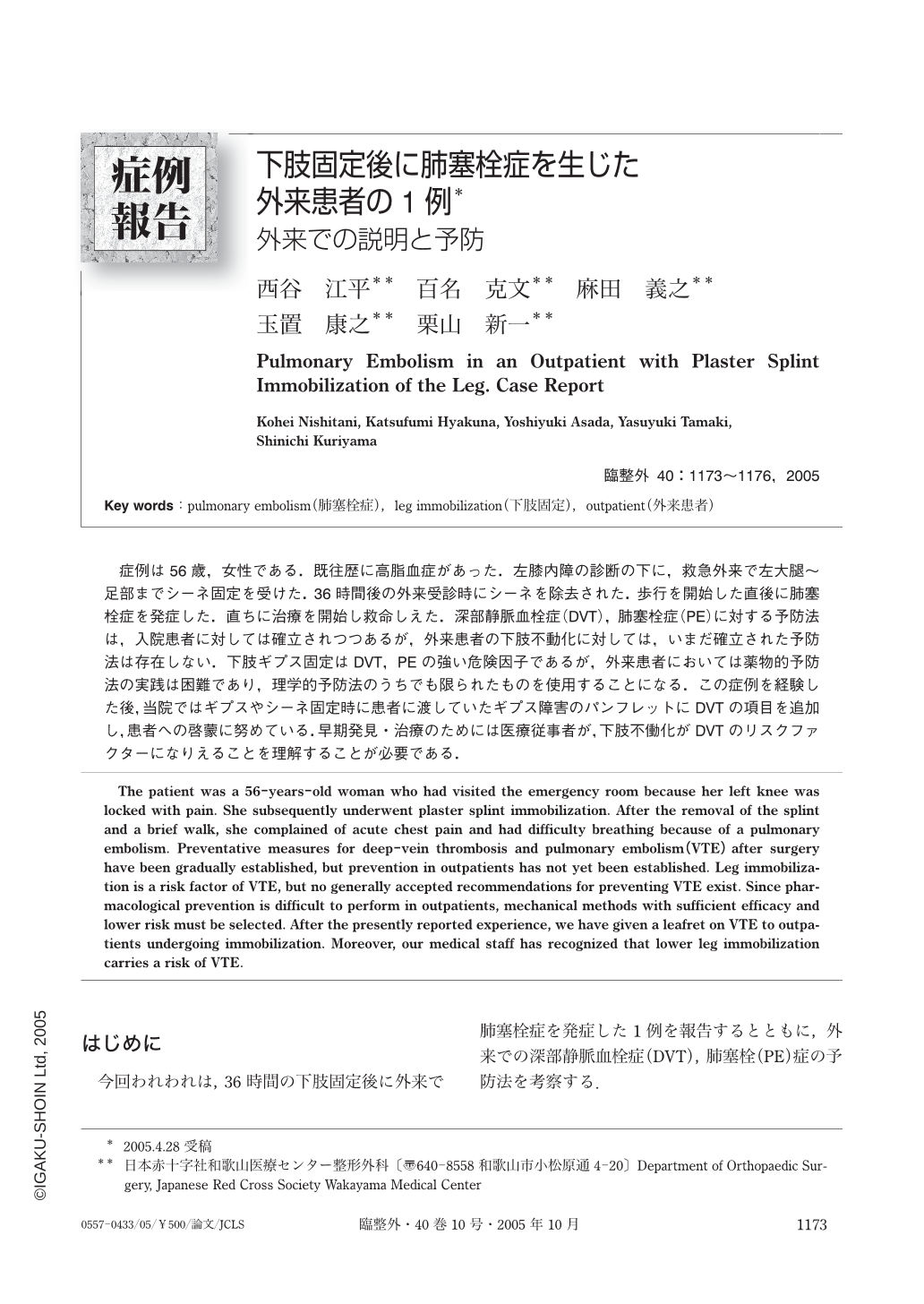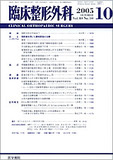Japanese
English
- 有料閲覧
- Abstract 文献概要
- 1ページ目 Look Inside
症例は56歳,女性である.既往歴に高脂血症があった.左膝内障の診断の下に,救急外来で左大腿~足部までシーネ固定を受けた.36時間後の外来受診時にシーネを除去された.歩行を開始した直後に肺塞栓症を発症した.直ちに治療を開始し救命しえた.深部静脈血栓症(DVT),肺塞栓症(PE)に対する予防法は,入院患者に対しては確立されつつあるが,外来患者の下肢不動化に対しては,いまだ確立された予防法は存在しない.下肢ギプス固定はDVT,PEの強い危険因子であるが,外来患者においては薬物的予防法の実践は困難であり,理学的予防法のうちでも限られたものを使用することになる.この症例を経験した後,当院ではギプスやシーネ固定時に患者に渡していたギプス障害のパンフレットにDVTの項目を追加し,患者への啓蒙に努めている.早期発見・治療のためには医療従事者が,下肢不働化がDVTのリスクファクターになりえることを理解することが必要である.
The patient was a 56-years-old woman who had visited the emergency room because her left knee was locked with pain. She subsequently underwent plaster splint immobilization. After the removal of the splint and a brief walk, she complained of acute chest pain and had difficulty breathing because of a pulmonary embolism. Preventative measures for deep-vein thrombosis and pulmonary embolism (VTE) after surgery have been gradually established, but prevention in outpatients has not yet been established. Leg immobilization is a risk factor of VTE, but no generally accepted recommendations for preventing VTE exist. Since pharmacological prevention is difficult to perform in outpatients, mechanical methods with sufficient efficacy and lower risk must be selected. After the presently reported experience, we have given a leafret on VTE to outpatients undergoing immobilization. Moreover, our medical staff has recognized that lower leg immobilization carries a risk of VTE.

Copyright © 2005, Igaku-Shoin Ltd. All rights reserved.


